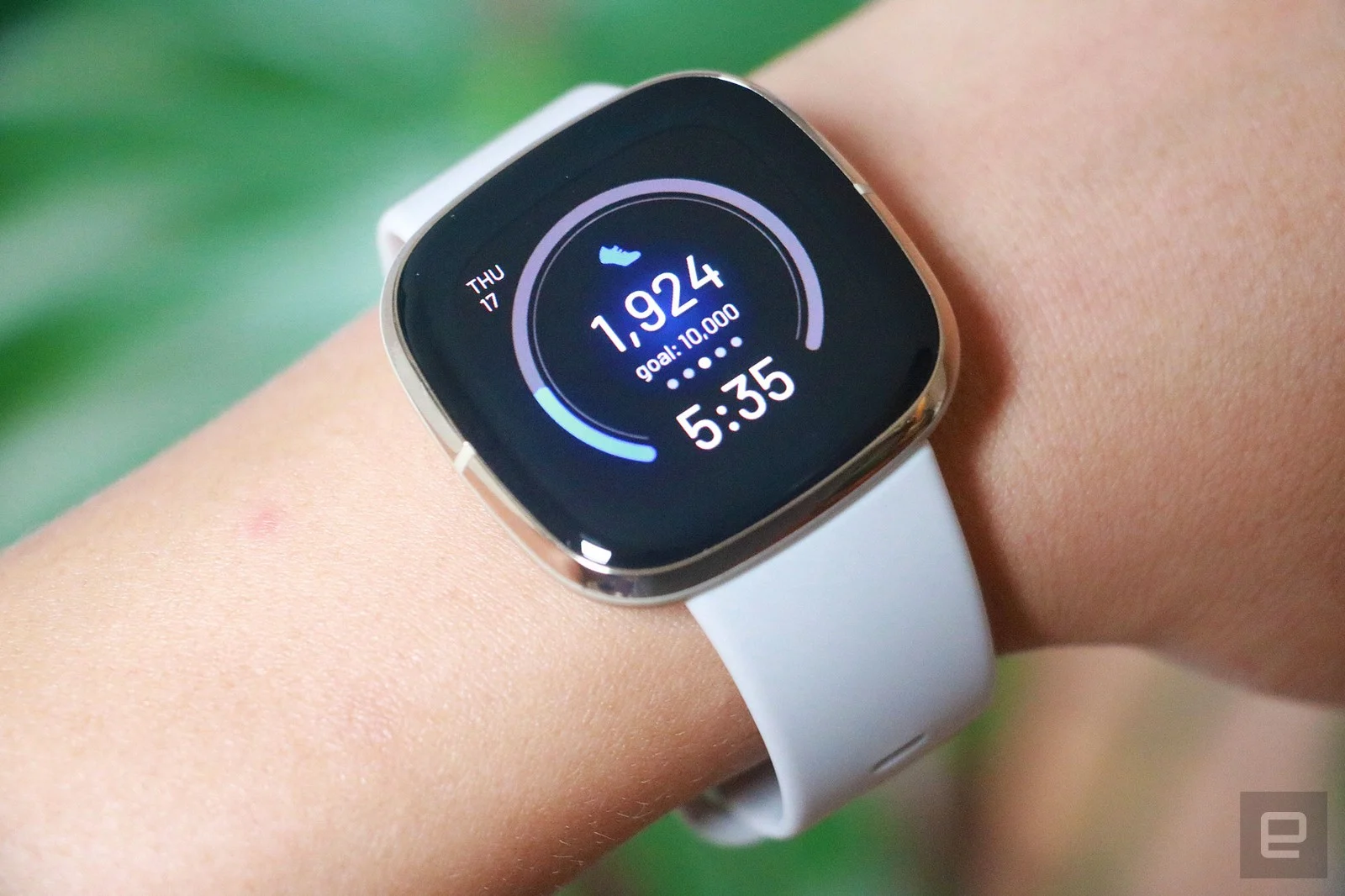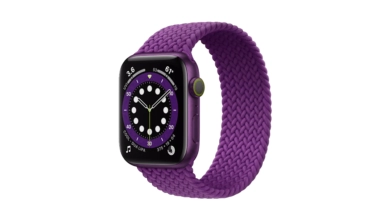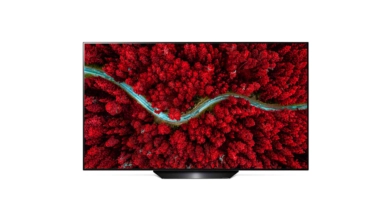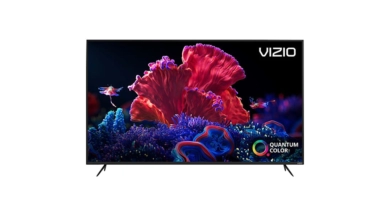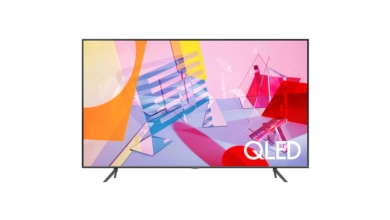Fitbit Sense
There is no such thing as too much health monitoring.
Fitbit and Apple have probably shared stories about how their smartwatches have saved lives. Anecdotes from customers who discovered heart irregularities or began taking their health seriously after using their products. Wearables are finding their place as comprehensive health trackers as companies continue to stuff their smartwatches with tech once reserved for doctors’ offices. The race now is to see who can predict what the next popular metric will be and how to interpret the data.
Fitbit hopes you’ll want a sensor that measures your body’s reaction to stress, as well as other things like skin temperature and blood oxygen, with its new $330 Sense smartwatch. The device also features a new buttonless design, but it otherwise looks similar to the company’s previous smartwatches. Still, the Fitbit Sense is the company’s attempt at a “advanced health” device, and it’s packed with features to help it deliver on that promise. When confronted with so much new information, it can be overwhelming, but the Sense lays the groundwork for a future in which all of this information will be put to good use.

Hardware and UI changes
One of the most significant changes made by Fitbit in this area was the elimination of physical buttons entirely. Instead, there’s a groove on the left side that the company has described as a button as well as a solid state sensor. To activate a “press,” you must completely cover this inch-wide groove with your finger. You can program a long press to launch Alexa or track a workout, while a shorter tap will take you to the main watch face or wake up the screen.
It took a while for me to get the hang of this. Because there isn’t a physical button, it’s difficult to tell if I’ve successfully triggered the sensor. There is some haptic feedback, but it only became more reliable after I realized that it’s better to use the side of my thumb rather than the middle, and to apply some force to trigger the sensor.
Fitbit’s navigation has been modified to be more swipe-heavy as a result of the removal of buttons. Swiping right now takes you back a page, whereas swiping up and down on the home page brings up your notifications and widgets, respectively. Swiping left, as before, displays the apps on your watch.
You can also personalize the widgets drawer to display your preferred tools. I included food and water logging, as well as weather and fitness metrics. When I wanted to track my calorie intake, I had to scroll all the way down to the bottom of this page, which is where Fitbit places that widget by default. You can rearrange these by tapping the Manage button at the bottom of the screen, then long pressing each widget to move it. Within specific widgets, however, you can’t reorder each field, so you can’t, for example, move calories burned above distance in Core Stats.
While the new navigation is easy to use, it is also sluggish and finicky. Not every swipe registers, and sometimes when I swiped left, the watch mistook me for tapping on the screen and took me to an app I didn’t want to open. I had to learn to be very deliberate in my movements.
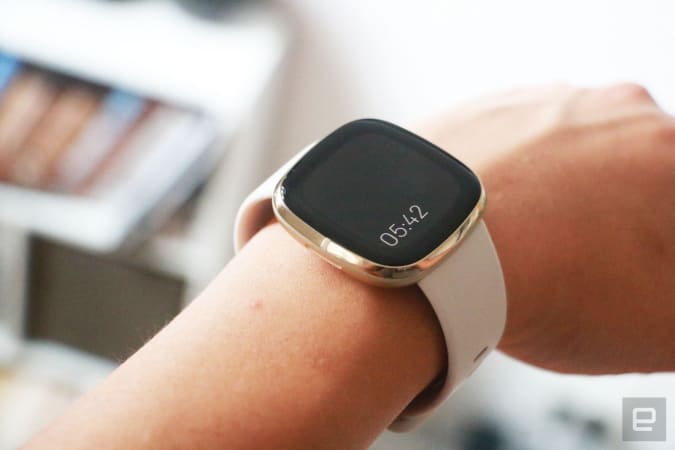
Aside from that, it’s a very attractive device. The gleaming aluminum and stainless steel case is appealing, and the new sharper AMOLED screen is lovely and bright. I still prefer circular watch faces to the Fitbit’s rounded square shape, but the Sense manages to look sophisticated (if a little like an Apple Watch, only squatter in shape). Furthermore, at 45.9 g with the band, it is lighter than the Galaxy Watch 3, which weighs 48.2 g without the strap. The aluminum model of the Apple Watch Series 6 is still the lightest, weighing only 30.5 grams.
EDA and stress tracking
Aside from changes to the Fitbit interface and design, the Sense includes new features such as an electrodermal activity (EDA) sensor and skin temperature monitoring. EDA, also known as galvanic skin response, examines your skin for changes that may be caused by stress. You can manually perform a scan by using the on-watch app and selecting Quick Scan for a two-minute session or Guided Sessions for a more meditative experience.
I sat still and covered the watch face with my palm during one of my quick scans, making sure my skin was in contact with the case. When the watch vibrated to indicate that the session had begun, I closed my eyes and waited the two minutes. My mind was still racing from a stressful encounter at first, but I was able to calm down after a while.
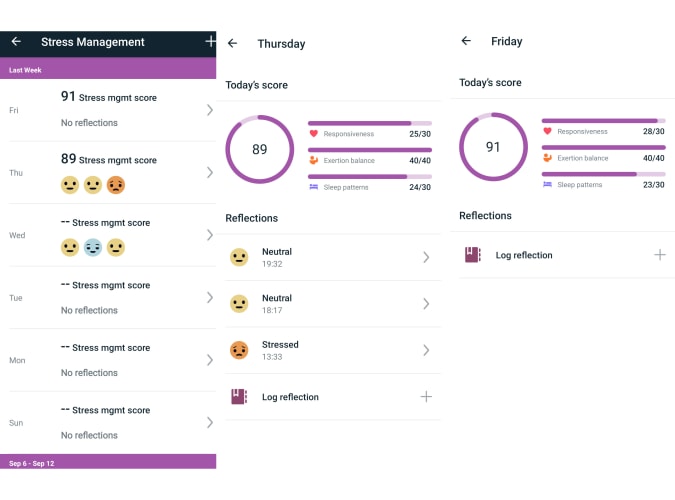
When the timer ran out, the Sense vibrated, indicating that I could remove my palm. I’ll admit that on previous attempts, I got impatient and peeked at the screen to see how much longer I had to sit still, and the Sense correctly paused the session when I moved my hand. Following the scan, the watch indicated that I had four “changes” or “responses” during the first half of the scan and none during the second half. I’m not sure how good or bad that is, but it seems to correspond with my experience of feeling more frustrated at the beginning of the session and calmer near the end. Fitbit claims that each “response” is a small change in the sweat level on my skin, but that doesn’t help me gauge my performance. In subsequent tests after workouts, I received between 12 and 15 responses, so a lower number appears to be preferable.
While it was reassuring to see the watch confirm my concerns, a manual scan doesn’t seem like the best way to use this tool. When I’m stressed, my first instinct isn’t to open an EDA app on my watch; rather, it’s to address the source of my anxiety. The guided sessions may be useful if you frequently lose sleep due to the million thoughts racing through your mind at night, but all-day tracking may be a better use of the EDA tool. The Sense can then gently remind me to take a walk to calm down, just as it tells me to get up and move if I’ve been idle for too long. However, for the time being, the watch only tracks EDA when you ask it to, which may be beneficial to battery life.
Fitbit uses this information to calculate your Stress Management score, which takes into account your heart rate, sleep, and activity levels. The scale runs from 0 to 100, with higher scores indicating “fewer physical signs of stress.” So far, despite a stressful week, I’ve received an 89, which makes me proud but doesn’t feel accurate given the amount of panicking I’ve done about my various deadlines.
With Fitbit Premium, you’ll get a little more information about what factors contributed to your score, such as your sleep patterns or physical activity. A closer look at the app revealed that my score had been lowered by two nights of poor sleep but boosted by several days of workouts.
However, I’ve only been using the Sense for a few days, so things could change. In that case, there’s always the Mindfulness tile in the Fitbit mobile app, which allows users to set goals for the number of minutes they devote to their mental health each day. This tile also includes activities such as “Learn Self Compassion” and “Spread Loving Kindness,” as well as guided breathing sessions, to help you feel better. These guides will look familiar if you’ve ever used a mindfulness app like Aura, Calm, or Headspace; they’re audio files that tell you what to think about, though Fitbit’s tutorials also remind you to open the EDA app on the Sense.
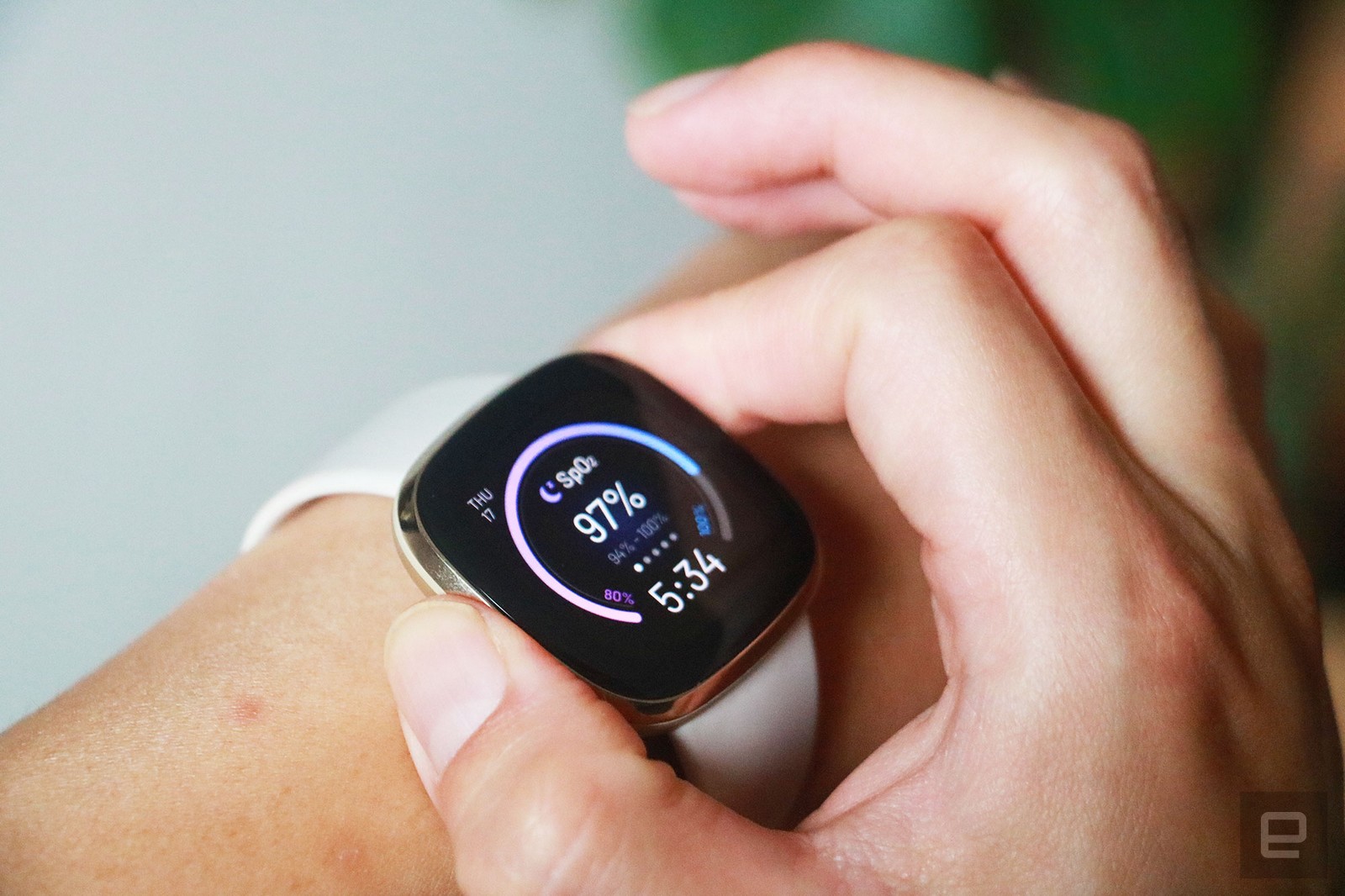
Blood oxygen and skin temperature
Fitbit has been embedding blood oxygen sensors in its smartwatches for years, but they were only enabled this year via a software update. It introduces a new SpO2 watch face with the Sense, which will cycle between showing your blood oxygen saturation level, heart rate, floors climbed, and steps taken. If you wear the watch to bed, it measures your nightly average SpO2 percentage, and my result, which ranged between the 95th and 97th percentile, was consistent with what Samsung’s Galaxy Watch 3 showed.
Blood oxygen is a useful metric to monitor, but it’s only really useful for detecting anomalies that may indicate other underlying health issues. I can’t vouch for the long-term performance because I didn’t have an irregularity during my review window, but knowing it’s there gives me some peace of mind.
Unlike Apple and Samsung, which track your SpO2 when you launch the tool, Fitbit only monitors your blood oxygen levels while you sleep. According to a company spokesperson, this is due to the fact that the Sense takes five minutes to measure your SpO2, and no one wants to sit still for that long. Furthermore, the company claims that your body is most likely to show variations from your baseline levels at night, and that your blood oxygen levels don’t change much during the day.
Fitbit’s new skin temperature tracking follows a similar philosophy. Before the watch can provide reports on your baseline temperature as well as variations, you must have worn it to bed for three nights. If you want to continue tracking your skin temperature after the baseline reading, you’ll have to wear the Sense to bed, which may be bothersome for some people (myself included).

However, if you do, the Sense has the potential to detect when you have a fever as well as the start of a menstrual cycle. Fitbit reported no overall changes after my third night, which isn’t surprising given that it’s the first result. (You’ll need three evenings’ worth of data before it generates the first report.) While the Sense cannot provide a reading of your actual skin temperature, it can tell you how it fluctuated while you slept, and it was fascinating to see how I became warmer as I fell deeper into sleep, then cooler again. Though this information isn’t immediately useful, I can imagine it alerting me to the onset of a fever or illness.
Heart rate, workouts and sleep tracking
Fortunately, the Sense does not require you to be asleep in order to monitor your heart rate. It constantly monitors your pulse to alert you to any irregularities, just like other Fitbit products and the Apple Watch. Based on your age and resting heart rate, the device uses Fitbit’s new heart rate sensor and algorithm to determine whether your pulse is too high or too low. Again, my heart rate has not deviated from what Fitbit determined to be my normal range, but this could aid in the detection of potentially fatal conditions.
Fitbit’s continuous heart-rate monitoring also assists it in better understanding what sleep zones you’re in, making it a more insightful bedtime tracker than Apple’s devices running watchOS 7. The latter only tells you how long you slept based on your movement, whereas Fitbit uses your pulse to determine whether you’re in REM or deep sleep, for example. The Galaxy Watch 3 does this as well, and I’ve found it to provide comparable data to the Sense, though Fitbit’s watch is slightly more comfortable to wear to bed.
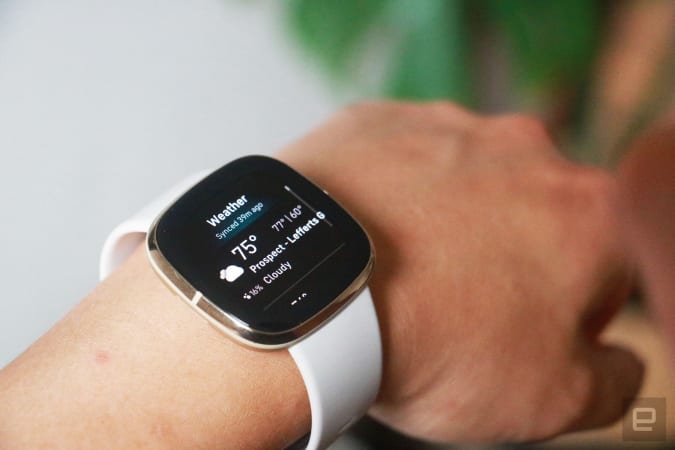
Aside from monitoring your health, the Sense can also assist you with your workouts. Its built-in GPS accurately measures your runs, walks, hikes, or bike rides without the use of your phone and reports your distance and pace once you’re finished. Before my first run, it took about 40 seconds for the Sense to lock onto a signal, but only 10 seconds when I tried again the next day in an area farther away from scaffolding and skyscrapers. That’s not bad; in fact, it’s comparable to the Galaxy Watch 3. Nonetheless, the Sense lags behind the Apple Watch Series 5, which barely pauses when connecting to GPS. (I wasn’t able to test the Series 6 before this review was published, but the GPS sensor on the Apple Watch hasn’t been updated as far as we know.)
The Sense, like other Fitbit watches, can track a wide range of activities, including yoga, circuit training, golf, martial arts, and tennis. It will add up the amount of time you spent in heart-rate zones such as fat burning, cardio, and peak, and then assign you points based on your age and resting pulse rate. This year, the Charge 4 tracker introduced Active Zone Minutes, and according to World Health Organization and American Heart Association guidelines, most people should aim for 150 points per week.
Fitbit will also assess and score your cardio fitness, which is an estimate of your maximum oxygen uptake during intense exercise, or VO2Max. While these figures are primarily useful to athletes, they do provide reassurance that you are not out of the ordinary.
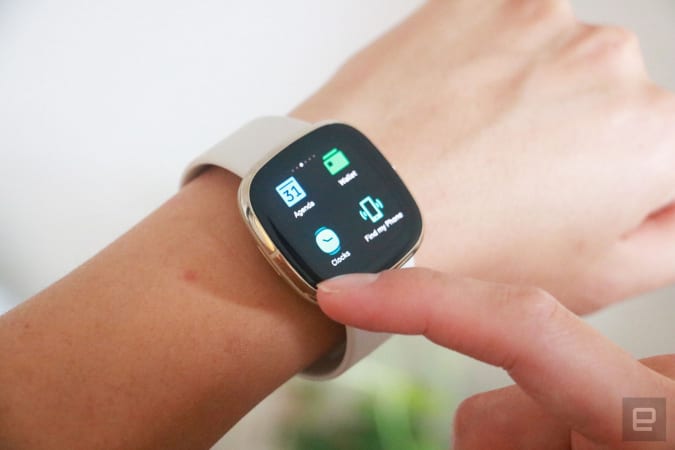
Fitbit Premium and other smartwatch features
It’s nice that the Sense can track so many different health metrics, but if you want to see more information or track your progress over time, you’ll need to upgrade to Fitbit Premium. It costs $9.99 per month and includes metrics such as seven-day and 30-day trends for heart rate variability, SpO2, breathing rate, skin temperature changes, and other metrics. Premium also grants access to a detailed breakdown of what factors influenced your stress score, as well as more information about your temperature changes throughout the night, as well as additional workout content and guided meditations.
I’m not a fan of charging someone who purchased your product a monthly fee to access their data, but at least the information Fitbit provides for free is useful. I also wish I didn’t have to wear the Sense to bed in order to receive continuous reports on my breathing rate, heart rate variability, skin temperature, and oxygen saturation.
Fitbit appears to have reconsidered its approach shortly before this review was published, and will now provide users with free access to their longer-term health metrics. Eventually, at any rate. In a statement, the company stated:
We are making the Health Metrics Dashboard available first to Premium users as part of the perk of being a Premium member, and because we know our Premium users are interested in receiving additional data and insights about their health and wellness. Given today’s environment, we know advanced health metrics are a valuable addition to help anyone discover important trends about their wellbeing and are looking at ways to roll this out to Fitbit users with compatible (or supporting) devices more broadly in the coming months.
Fitbit Spokesperson
The Sense’s other features are typical of a Fitbit smartwatch: When your phone is nearby, it sends you notifications, and you can dictate responses to messages (if you’re using an Android device). You can also use Alexa on your wrist to control your smart home devices, listen to your favorite Spotify playlists, and track your calorie and water intake, to name a few examples. For many of these features, I prefer Samsung’s Tizen OS because it provides more options, but Fitbit’s OS should be sufficient for most people.
Performance and battery life
Fitbit does not disclose the processors used in its smartwatches, but whatever they used in the Sense could benefit from an upgrade. The watch appears to take an eternity to launch apps such as Today or Spotify. Furthermore, the Sense crashed several times during my initial hours with it. I’ve grown accustomed to the delay after learning to be very deliberate with the device, but in general, Samsung and Apple watches are faster.
However, the Sense outperforms its main competitors in terms of battery life, lasting about two and a half days before reaching 25% and alerting me (via phone alert and email) that it was running low on power. That includes two nights of sleep tracking, three brief workouts, and one 40-minute yoga session with the always-on display turned on. I expect GPS to drain the battery as well, but turning off the always-on display should give you some hours back. That’s better than the Apple Watch Series 6 (based on our experience with the Series 5; Apple gives similar estimates for both) and the Galaxy Watch 3, which may get you through a second day with always-on screens enabled. However, they usually give up after one and a half hours.
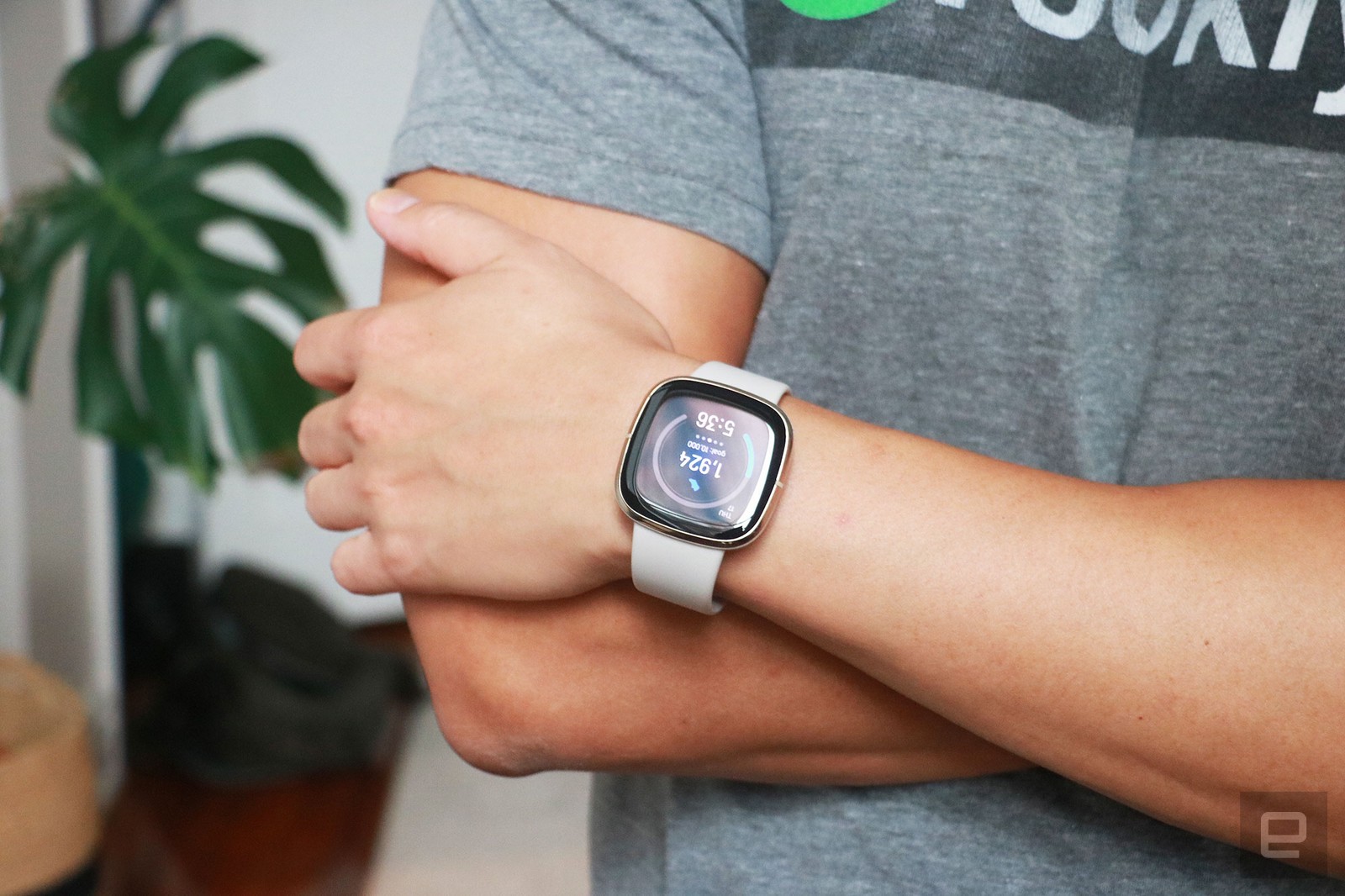
Wrap-up
As if all of this wasn’t enough, Fitbit also announced that more new features for the Sense would be available later this year, including an FDA-cleared ECG tool, Google Assistant support, and spoken responses from Alexa and the Google Assistant via the watch’s speaker. The Sense can measure so much that it’s almost overwhelming, but I’m mostly impressed by what the watch can do.
The majority of the health-tracking features work well and provide useful insights, and while I don’t like that some extras require a Premium subscription, the free data is at least useful. I wish the Sense was faster and its operating system was more powerful. Still, at $330, it’s less expensive than the new Apple Watch Series 6 and the Samsung Galaxy Watch 3, and it has more health-tracking features. If you don’t need this slew of tools or don’t plan to wear a watch to bed, the Versa 2 is probably adequate, but the Sense feels reasonably priced for what it offers.
Fitbit Sense Review
Performance - 8.4
Display - 8
Cost - 8.1
8.2
8.2/10 Total Points
In addition to basic smartwatch features, the Fitbit Sense has a new navigation system that can be challenging to learn. For people who don't mind wearing a watch to bed in order to get more information about their health, this is a great alternative to Apple and Samsung's more expensive wearables.

